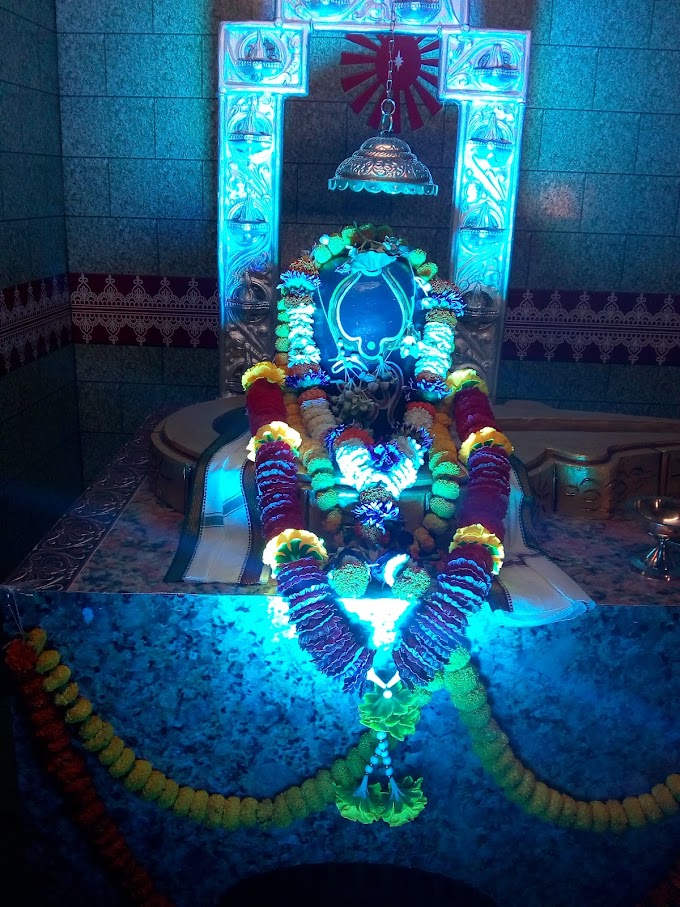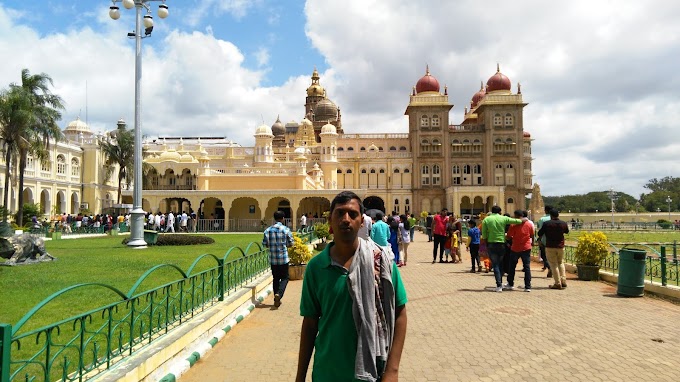The Indian
culture is very old because the culture is derived from ancient civilization.
Normally the ancient civilization of India means Indus Civilization and
everybody is known that but no one is known that the prior to existence of
Indus civilization is there many civilization which were demolished by any other reasons that may be climate
changes or by outsider attached which is evident from the near part of Chennai.
According
to archeologist as well as scientist that there have some evidence which is shows
that during the stone age, one human species was there.
The
source of tribes is generated from the ancient civilization but which
civilizations were interested to live with nature like hill station or deep
forest area and the ancestral of the said civilization is called Schedule tribes.
The original source of generation is one but according to think, way of living,
behavior and other culture of there is ancient in nature.
The
word “Culture” is an obligatory concept like “society” but it is also
vague and contested. For the existence of a culture is necessarily required a
society. The Culture is often described as social rather than individual, local
rather than universal, learned rather than instinctive, historical
rather than biological, evolved rather than planned, distributed
rather than centralized. The foundation of a culture is depend upon ceremony,
tradition, socialization, food, Arts and literature, livelihood etc.
The
definition of word “ancient tribes” has not been defined by any scholar till yet
but in my opinion the Ancient Tribes means a particular society occupied by
group of nomadic people who maintained their live through hunting and gathering
of wild fruits, tubers and edible roots and live like as ancient lifestyle.
IMPORTANT
FEATURES ABOUT TRIBAL SOCIETY.
I.
They live in relative isolation usually in hill
sand forests in interior area.
II.
Their family is nuclear family
III.
Their social identity is defined and redefined
from time to time.
IV.
They constitute simple societies which are socio-culturally
homogenous.
V.
They have their written and oral language for
communication.
VI.
They have their rich cultural tradition and
heritage although their social organization is simple.
VII.
The tradition and life style is very old and
effective tradition.
In Indian, there are nearly 650 scheduled Tribes
residing in different part of different States. Among them some tribes are
famous due to their culture and ancientness.
Among
the tribes in India, some tribe ancient popular tribes are Gonds Tribes,
Abhors Tribes, Bhils Tribes, Santhal
Tribes, Great Andamanese Tribes, Khasi Tribes, Garo Tribes, Angami Tribes, Munda Tribes
1. ABHORS
TRIBE:
Mongolians living in Arunachal Pradesh, Manipur and Assam
region. There in any element other than the Negrito one which has encouraged
the mind of Indian Anthropologists those us the Mongolian Element.
According to Professor
P.C.Chowdhary of Dibrugarh University “the first link between the two countries
dates back to the fifth century BC”.
And according to Mr. Mohanlal Yadu
of the Government’s College Raipur Ram “a discovery of seventeen rock paintings
in three shelters in the dense forests of Chitwa Dongri (Leopard Hill, 114 km
from Raipur, Madhya Pradesh) has revealed startling evidence of the presence of
Mongolian settlers in Central India during the Neolithic Age (2500 BC to 600
BC) which means a long period before the arrival of Gupta period”.
The many Indian believed and to
be found the race of Mongolans at the north-eastern part of india (Specially
Himalayan region). Some Indian believe that the Mongolian derived from the
original Mongolia and maintain their
customs and habits in India.
Many persons believe that the
tribe of Arunachal
Pradesh, Manipur and Assam region
are to be Mongolian. The reason for believe them as Mongolian that there
are many similarity between the tribes of that place who are living at Arunachal Pradesh, Manipur and Assam
region.
2. GOND TRIBE
Gond is one type of Tribal People and originally belong to central
and south-central India. Basically They are lived in forest area of the states
of Madhya Pradesh, Maharashtra, Telangana, Andhra
Pradesh, Bihar, and Odisha.
Gonds tribe is divided into four
part like Raj Gonds,
Madia Gonds, Dhurve Gonds and Khatulwar Gonds. According to 2011 census, the Gond Tribe is the largest tribal group of India with a
population exceeding 12 million. The Gonds belong
to the Gondi Manda subgroup of the South Central branch of the Dravidian
language family. Earlier period the Gonds were nomadic hunters and food
gatherers and present days they are shifted to cultivation.
3. BHIL TRIBE
Bhil Tribe is the Original Tribe
of the states of Gujarat, Madhya
Pradesh, Chhattisgarh, Maharashtra and Rajasthan. The word
Bhil is derived from "VEEL" or “BILLU” which means "bow"
in the Dravidian language. The Bhil
tribe is known as "Dhanush Purush of India". The language of this tribe is Bhil and they are
worship “VAGHDEV” who known as the Tiger God. As per the 2011 census the total
population is nearly 25,05,888.
The main source
of income derive from the agriculture and animal husbandry and in present days
the tribe is manufacturing the agricultural equipments also.
4. SANTHAL
TRIBES
Originally Santals were nomadic
hunters and food gatherers. Presently they are mostly farmers. For centuries,
Santals have been living as neighbors of other communities maintaining a cultural and social distance. The
Santals are regarded as one of the economically weak communities of India.
The Santal or Santhal, are a Munda ethnic group
native to India and
Bangladesh. Santals are found in largest number in the Jharkhand state of India in terms of population and are also found in the states
of Assam, Tripura, Bihar, Chhattisgarh, Odisha and West Bengal. The language of
this tribe is SANTALI.
5. GREAT
ANDAMANESE TRIBES
Andamanese Tribe are found in the
Island of Andaman and Nicobar.The Andaman Islands is the home place of four 'Negrito' tribes such as the
Great Andamanese, Onge, Jarawa and Sentinelese. Great Andamanese Tribes are known for their culture,
physical status and occupation. Earlier period, there were several sub tribes
but most of them disappeared due to many reasons. The language are used Jeru,
khora and Andamani Hindi.
6. KHASI
TRIBES,
Khasi tribe is the originally belong to Myanmar and
during the migrant period they are settled down in east part of Assam. Since
then they are in India and now they are also get the Citizenship of India. The
word “KHASI” is derived from Shankradeva “Baghavata Purana”.
This tribe found in many part of India like Assam,
Meghalaya, Panjan, Uttra Prasesh, Manipur West Bengal. The common language of
this tribe is Khasis.
7. GARO TRIBE
The Garos Tribe is the second largest tribe in Meghalaya. The Garos are an originally
Tibeto-Burman ethnic group
from the Indian subcontinent, found in the states of Meghalaya, Assam, Tripura,
Nagaland, and neighboring areas of Bangladesh. The
Garos have a number of dialects and cultural groups. Each of them originally
settled at a particular area of the Garo Hills. Originally there were only two tribe
such as Sangma and Marak and subsequent period Momin, Arengh and Shira have
been developed from the two original tribes.
8. ANGAMI TRIBES
There are twenty tribes comes under State of Nagaland and Angami
tribe is one of them. Nagaland is located in the North-East part of India and
Angami Tribe people are mainly found Kohima District.
Angami tribe is divided
into four part i.e. i) Chakhro Angami, ii) Weasten Angami, iii) Northen Angami
& iv) Southern Angami. Angami Tribe are found top of the hill area. The
language of this tribe is Ngami, Gnamei.
9. MUNDA TRIBES
Munda tribe are mainly found in the
North side of costal part including Jharkhand, Bihar, Odisha, Chhattisgarh
& West Bengal. Munda Tribe consider themselves as Orthodox Hindu. It is
also evidence that they were existed prior to British Ruling period. During the
British Ruling period, this tribe was very popular. The language they are used
for the communication Mundari or Killi.
The
Government of India has many schemes for the development of tribes and their
culture. The cultures of the tribes are ancient culture and some case cultures
are derived from Sindu civilization.













